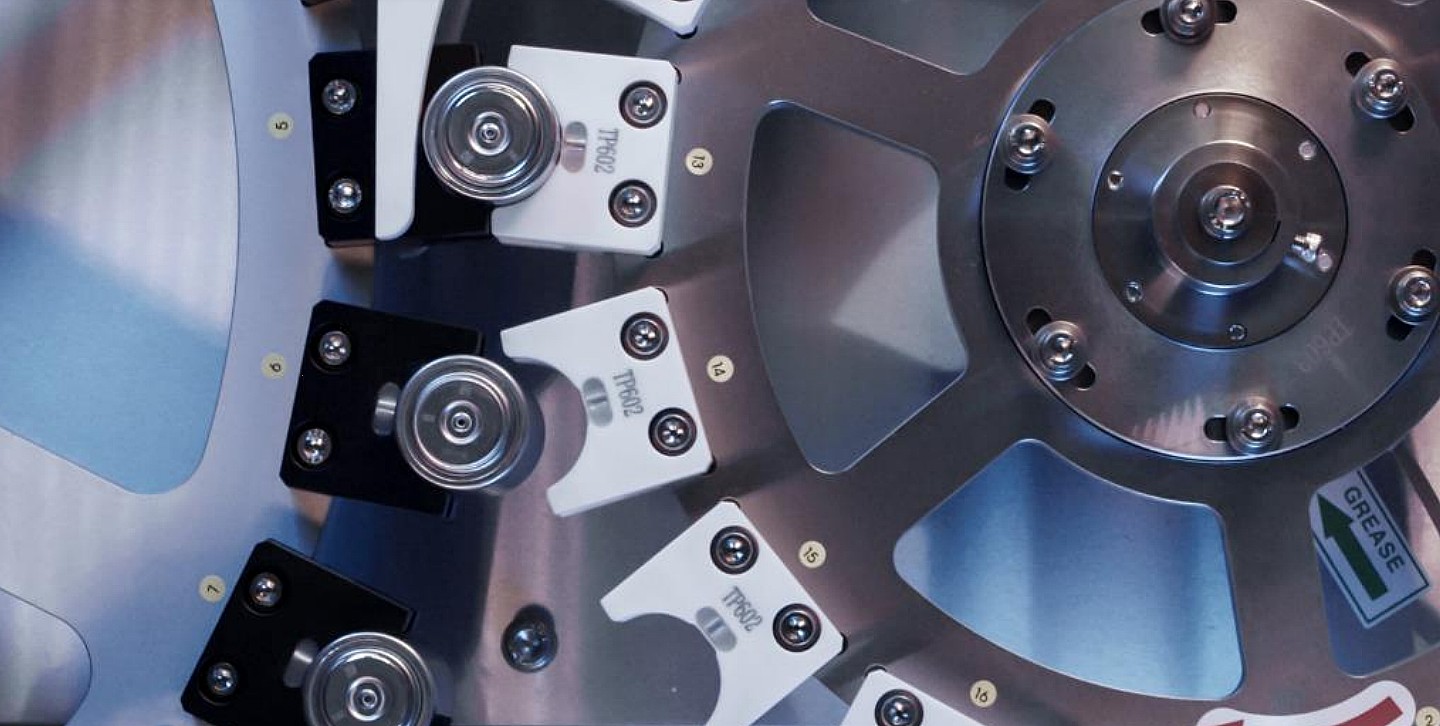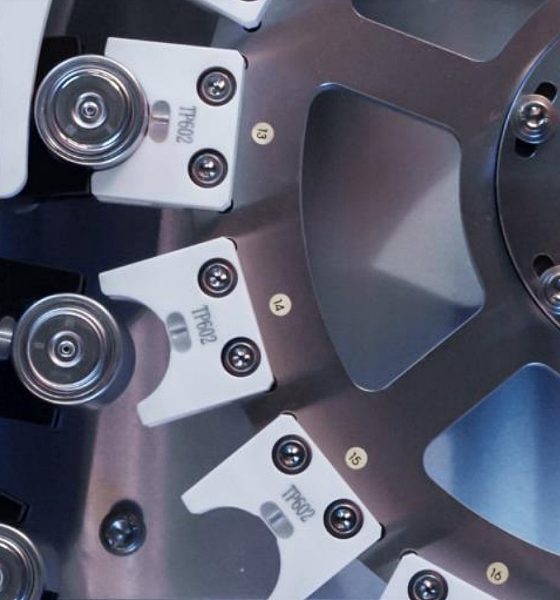

News
Department of Energy offers $45M in funding for more efficient EV battery development
The United States Department of Energy announced that it will offer up to $45 million in funding to support the domestic development of advanced and more efficient electric vehicle batteries. The announcement comes just one day after the Biden Administration allocated over $3.1 billion to boost EV battery manufacturing in the United States.
“Advanced batteries are the heartbeat of the electric vehicle industry and investments to make them charge faster and last longer will be critical to accelerate the deployment of electric cars and trucks,” Jennifer Granholm, the U.S. Secretary of Energy said. “The benefits of an electrified transportation sector in America will be felt for generations to come — from directly combatting climate change to growing domestic manufacturing jobs and strengthening our overall energy independence.”
We want to make electric vehicles more accessible for all Americans, so we’re announcing a new program (and up to $45M!) to develop more efficient EV batteries that will charge faster⚡️and last longer in colder temperatures and on the road. ?️ https://t.co/fW9D1iwYl4
— U.S. Department of Energy (@ENERGY) May 3, 2022
The DOE will fund the projects through the launch of the Electric Vehicles for American Low-Carbon Living (EVs4All) Program, which is made possible through the department’s Advanced Research Projects Agency-Energy. The plan is part of President Biden’s plan to have at least half of all passenger vehicle purchases be electric in the United States by 2030.
The EVs4All program will address three of the most heavily scrutinized portions of the EV ownership experience: Charging Speed, Efficiency, and Resilience.
Faster Charging: The DOE said that while at-home charging is preferred for many EV drivers as it can offer a fully-charged vehicle every morning, there are still issues with some owners who live in rented spaces or are in other situations where home charging is not necessarily possible. Advanced batteries are capable of safe, rapid charging that can eliminate the total time spent at a public EV stall. It will not only keep times at chargers to as little as five minutes, but it will also increase cost savings during each charge.
Increased Efficiency: Electric vehicle ranges can vary based on climate. Those who live in colder weather settings will tell you firsthand that they do not get the range they expected in their EVs. Current EV batteries lose performance when confronted with these situations, with some manufacturers using things like heat pumps to combat range loss. Developing new battery chemistries that will not be affected as much by cold temperatures is “key to ensuring batteries can power vehicles in the coldest parts of the country as well as motivating broader adoption amongst drivers who live in those regions,” the DOE said.
Improving Resilience: Range anxiety is one of the most common terms in the EV ownership experience. Battery resilience is needed to alleviate concerns from new EV owners, especially those who take long drives to work or for leisure. The DOE said this may be the most important thing to develop as two-thirds of Americans prefer the more economical option of purchasing used vehicles rather than leasing or buying new cars.
I’d love to hear from you! If you have any comments, concerns, or questions, please email me at joey@teslarati.com. You can also reach me on Twitter @KlenderJoey, or if you have news tips, you can email us at tips@teslarati.com.

News
Tesla FSD fleet is nearing 7 billion total miles, including 2.5 billion city miles
As can be seen on Tesla’s official FSD webpage, vehicles equipped with the system have now navigated over 6.99 billion miles.

Tesla’s Full Self-Driving (Supervised) fleet is closing in on almost 7 billion total miles driven, as per data posted by the company on its official FSD webpage.
These figures hint at the massive scale of data fueling Tesla’s rapid FSD improvements, which have been quite notable as of late.
FSD mileage milestones
As can be seen on Tesla’s official FSD webpage, vehicles equipped with the system have now navigated over 6.99 billion miles. Tesla owner and avid FSD tester Whole Mars Catalog also shared a screenshot indicating that from the nearly 7 billion miles traveled by the FSD fleet, more than 2.5 billion miles were driven inside cities.
City miles are particularly valuable for complex urban scenarios like unprotected turns, pedestrian interactions, and traffic lights. This is also the difference-maker for FSD, as only complex solutions, such as Waymo’s self-driving taxis, operate similarly on inner-city streets. And even then, incidents such as the San Francisco blackouts have proven challenging for sensor-rich vehicles like Waymos.
Tesla’s data edge
Tesla has a number of advantages in the autonomous vehicle sector, one of which is the size of its fleet and the number of vehicles training FSD on real-world roads. Tesla’s nearly 7 billion FSD miles then allow the company to roll out updates that make its vehicles behave like they are being driven by experienced drivers, even if they are operating on their own.
So notable are Tesla’s improvements to FSD that NVIDIA Director of Robotics Jim Fan, after experiencing FSD v14, noted that the system is the first AI that passes what he described as a “Physical Turing Test.”
“Despite knowing exactly how robot learning works, I still find it magical watching the steering wheel turn by itself. First it feels surreal, next it becomes routine. Then, like the smartphone, taking it away actively hurts. This is how humanity gets rewired and glued to god-like technologies,” Fan wrote in a post on X.
News
Tesla starts showing how FSD will change lives in Europe
Local officials tested the system on narrow country roads and were impressed by FSD’s smooth, human-like driving, with some calling the service a game-changer for everyday life in areas that are far from urban centers.

Tesla has launched Europe’s first public shuttle service using Full Self-Driving (Supervised) in the rural Eifelkreis Bitburg-Prüm region of Germany, demonstrating how the technology can restore independence and mobility for people who struggle with limited transport options.
Local officials tested the system on narrow country roads and were impressed by FSD’s smooth, human-like driving, with some calling the service a game-changer for everyday life in areas that are far from urban centers.
Officials see real impact on rural residents
Arzfeld Mayor Johannes Kuhl and District Administrator Andreas Kruppert personally tested the Tesla shuttle service. This allowed them to see just how well FSD navigated winding lanes and rural roads confidently. Kruppert said, “Autonomous driving sounds like science fiction to many, but we simply see here that it works totally well in rural regions too.” Kuhl, for his part, also noted that FSD “feels like a very experienced driver.”
The pilot complements the area’s “Citizen Bus” program, which provides on-demand rides for elderly residents who can no longer drive themselves. Tesla Europe shared a video of a demonstration of the service, highlighting how FSD gives people their freedom back, even in places where public transport is not as prevalent.
What the Ministry for Economic Affairs and Transport says
Rhineland-Palatinate’s Minister Daniela Schmitt supported the project, praising the collaboration that made this “first of its kind in Europe” possible. As per the ministry, the rural rollout for the service shows FSD’s potential beyond major cities, and it delivers tangible benefits like grocery runs, doctor visits, and social connections for isolated residents.
“Reliable and flexible mobility is especially vital in rural areas. With the launch of a shuttle service using self-driving vehicles (FSD supervised) by Tesla in the Eifelkreis Bitburg-Prüm, an innovative pilot project is now getting underway that complements local community bus services. It is the first project of its kind in Europe.
“The result is a real gain for rural mobility: greater accessibility, more flexibility and tangible benefits for everyday life. A strong signal for innovation, cooperation and future-oriented mobility beyond urban centers,” the ministry wrote in a LinkedIn post.
News
Tesla China quietly posts Robotaxi-related job listing
Tesla China is currently seeking a Low Voltage Electrical Engineer to work on circuit board design for the company’s autonomous vehicles.

Tesla has posted a new job listing in Shanghai explicitly tied to its Robotaxi program, fueling speculation that the company is preparing to launch its dedicated autonomous ride-hailing service in China.
As noted in the listing, Tesla China is currently seeking a Low Voltage Electrical Engineer to work on circuit board design for the company’s autonomous vehicles.
Robotaxi-specific role
The listing, which was shared on social media platform X by industry watcher @tslaming, suggested that Tesla China is looking to fill the role urgently. The job listing itself specifically mentions that the person hired for the role will be working on the Low Voltage Hardware team, which would design the circuit boards that would serve as the nervous system of the Robotaxi.
Key tasks for the role, as indicated in the job listing, include collaboration with PCB layout, firmware, mechanical, program management, and validation teams, among other responsibilities. The role is based in Shanghai.
China Robotaxi launch
China represents a massive potential market for robotaxis, with its dense urban centers and supportive policies in select cities. Tesla has limited permission to roll out FSD in the country, though despite this, its vehicles have been hailed as among the best in the market when it comes to autonomous features. So far, at least, it appears that China supports Tesla’s FSD and Robotaxi rollout.
This was hinted at in November, when Tesla brought the Cybercab to the 8th China International Import Expo (CIIE) in Shanghai, marking the first time that the autonomous two-seater was brought to the Asia-Pacific region. The vehicle, despite not having a release date in China, received a significant amount of interest among the event’s attendees.








